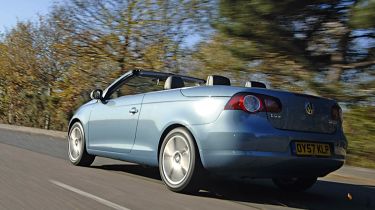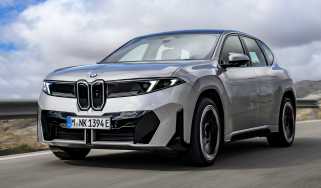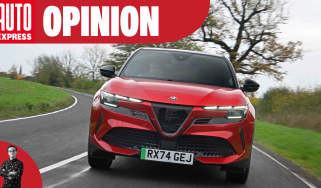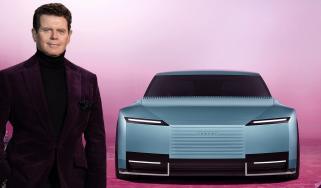VW Eos 2.0 TDI Sport
Cheaper than the Saab, the Eos is also smaller. So how does it stack up?
At £22,647, the Eos undercuts the 9-3 by £3,783. It sounds like a bargain – although it’s worth bearing in mind that you get less for your money, in terms of physical size, at least. The VW is 180mm shorter and 29mm narrower than the Saab.
Buyers certainly don’t lose out in the looks department, though. The Eos is a handsome and expensive looking car, roof up or down. However, changing from one mode to the other is more time-consuming than in the Saab – because there are more parts to take care of.
Firstly, the glass sunroof slides back over the centre section, the rear window rises over the top of that, and the whole lot slides away into the load bay. The mechanism is equally impressive when raising the roof – although again it’s slower than the Saab, taking 28.0 seconds as opposed to 19.5 seconds.
Top-down, the Eos isn’t as bluster-free as the Saab, but it’s a different story once the roof is raised. There really is no more wind noise than you would get with a Golf. The German car’s cabin is a much nicer place to be, too, at least for front seat passengers.
The design is fresh and more modern than the Saab’s, and the quality of the plastics and overall fit and finish are superior, too. But there are some cheap touches to be found; the ventilation controls feel disappointingly flimsy, for example.
While life is fine for those in the front, occupants in the back will find themselves less pampered. Unlike the 9-3, which can take two adults in the rear easily, passengers have to squeeze into the back of the Eos. Once the roof is up, anyone over 5ft 5in will struggle for headroom, and there’s less shoulder space, too.
Further back, the VW’s load space isn’t as large as the Saab’s with the top raised – but we like the Eos’ boot luggage cover. If you know you’re going to keep the hood up for the entire journey, the lid can be clipped up and out of the way to provide 352 litres of space.
However, if you intend to drop the top, simply ensure that all luggage fits beneath the cover. This reduces the available boot volume by 99 litres to 253 litres, but guarantees there’s room to stow the roof.
The Eos feels better engineered than the Saab, although it’s not completely immune to body shake. Ruts and potholes can occasionally catch out the VW and make its body judder, although not to the same extent as with the 9-3. The VW’s ride is firm and it isn’t good at masking rough road surfaces, but the Eos is a more enjoyable driver’s car. Body roll is better controlled, its steering is informative and overall the VW is sharper and more satisfying on the road.
Both cars have six-speed manual gearboxes as standard. The VW’s has a smoother, slicker change than the Saab’s, and the clutch is much easier to operate. The Eos’ brake pedal is nicely weighted, too, although its stopping distances aren’t as good as the Saab’s – a measurement of 50.8 metres from 70mph is 3.8 metres longer than the 9-3 achieved.
The lighter Eos has a slight advantage when it comes to performance, but not refinement. At low speeds, the 2.0-litre TDI is rather rattly. And although it settles down the faster you go, it’s never as hushed as the Saab’s unit. Is this a significant enough shortcoming to cost it victory?
Details
Price: £22,647
Model tested: VW Eos 2.0 TDI Sport
Chart position: 1
WHY: The classy, solidly built Eos is our pick of the coupé cabriolets and will be a stiff test for the 9-3.
Economy
Noisier it may be, but the VW’s engine does have better economy. It returned 40.8mpg in our hands, 4.7mpg up on the Saab – giving a range of nearly 500 miles
Residuals
The Eos makes an excellent long-term investment. After three years and 36,000 miles the VW will be worth £12,501, having held on to a superb 55.2 per cent of its cost.
Servicing
There are no set intervals for the Eos – it has a self-diagnosing variable schedule. Even with a more complex roof, the VW is cheaper to service, at £605 for three visits.
Tax
If these two are run as company cars, the VW is the better choice, as it sits two brackets lower. Standard-rate payers will be charged £1,046 a year – £291 less than the Saab.



